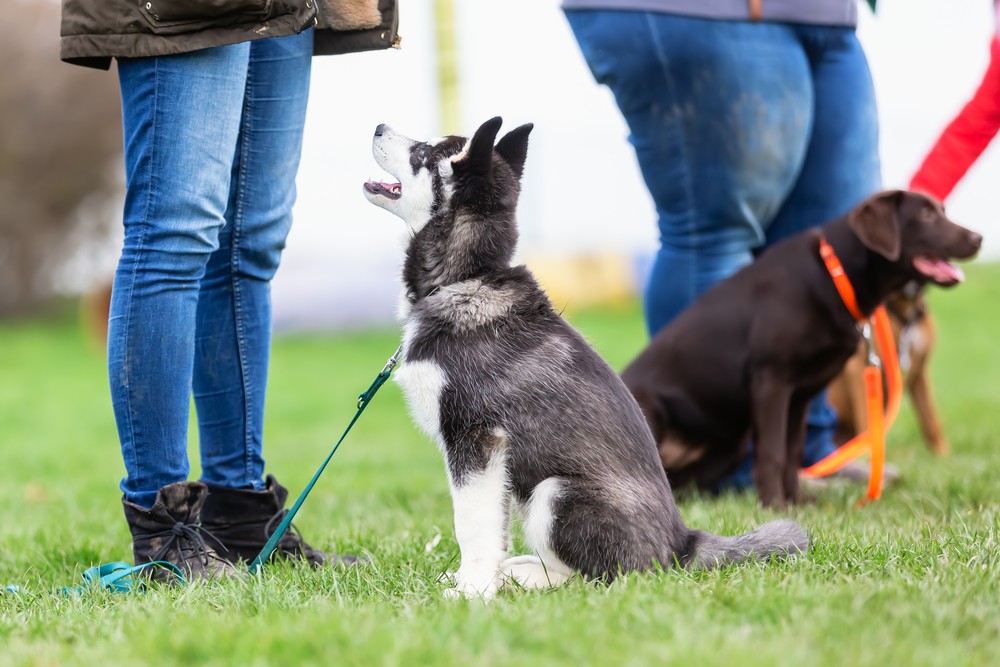Precise Position Changes: Foundations
Position changes are a skill needed in both rally and obedience. Taking the time to teach a good foundation will make the more advanced position changes much easier. In this blog, I'm working with Excel, who wasn't quite two when I videoed these sessions.
Excel is a dog who finds movement very reinforcing, and therefore, stillness is difficult. For this reason, I spend a lot of time reinforcing him for doing nothing. This helps with anticipation and also helps him keep his body quiet and still. If your dog is like Excel, reinforce for waiting for the next cue and stillness even more than you reward the movement behaviors.
Positions in Front
In this video, I'm working on a full-body platform with Excel in front of me. I like to teach position changes in front first, so the dog gets comfortable with the changes without cranking their head to look at me, as they tend to do when in heel position.
Notice in the down that I give him the treat so he stands, and then I can cue the down again. This sets up a clean training loop and allows me to work on only one position change at a time. What I should have done differently is rewarded him with a "ground" reinforcement cue, which means I'll put the treat on the ground. This would have helped solidify some duration in the down.
Positions in Heel
In the second part of our session, I put Excel on the full-body platform and stepped into heel. The platform is a bit wide, and I noticed that he was getting a tiny bit butt out so I stepped onto the platform. You can see when I cued the positions while I was on the platform, he had to work extra hard to stay on it, and therefore straight.
When I reward, I feed Excel so his head is straight. This also helps with his body being still. Again, notice that I'm rewarding stillness in between changes.
Positions With Front Foot Target in Front
In this video, I'm working with Excel on the front foot target. Again, notice how I work on stillness within the session. Although I'm still training these positions, they are not new to him so I'm okay with working several position changes in a session. For dogs that are fairly new to position changes, I would only work one position change at a time.
During the sit to stand, I would reward Excel so that he stood. When I work on one position change, I don't want to cue the start position, so I either reward the dog so they will take that position or I will lure them into it.
When Excel starts getting really dancy with his feet, I throw a reset treat. I don't want that to carry on into the rest of our session. You can see when he comes back, he's much steadier.
Again, on the stand to down, I lure him back into a stand so that I'm only cuing the down.
When we started working sit to stand, Excel struggled a little bit. I realized later that I said stand a little bit differently than I normally do, so he was unsure. I left this part in so you could see how I deal with errors. When in doubt, throw a reset treat!
Positions With Front Foot Target in Heel
Here Excel is in heel position with the front foot target. Notice my placement of reward in heel, keeping his head up and straight. If I feel his butt flaring out, I will feed him with his head slightly out, especially on the downs.
Breaking down the position changes this way will help your dog get into the habit of performing them correctly. As the dog's movement becomes smooth and confident, I will start fading the props. When the dog is in heel position, I'll sometimes use a gate or wall next to me to help keep the dog straight as they get used to doing the position changes without the platform or front foot target.
Position changes both in front and heel is one of the many skills that we cover in RA260 Get Ready to Rally: Foundations. If you want to join me in this class, registration is open now!
By accepting you will be accessing a service provided by a third-party external to https://www.fenzidogsportsacademy.com/
